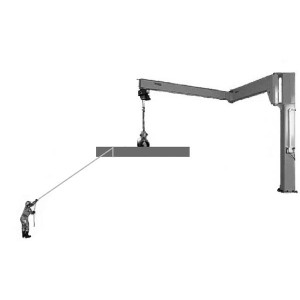With any lifting operation, there are many things that you need to think about and to consider. There are often dozens of moving parts and pieces involved, and there can be several factors involved with the planning of said operation. One factor that you must account for during the planning process is for the swaying of loads, something that can naturally happen during lifting. We’ve explained more on load sway below, as well as some tips on how you can control and prevent it.
What is load sway?
When any object or load is hooked onto a crane and lifted clear of the ground, it will begin to swing, much like a pendulum. This is natural, given the physics of how it is hooked and because it isn’t supported by a surface beneath. Eventually, the load will come to a static halt when not in operation, but as the hoist begins to lift, you will find that swaying may begin to occur again. Load swaying can have a hugely negative impact on the productivity of the operation, as well as being a real cause for concern when it comes to the safety of the equipment and those around. This can be a much bigger problem if those involved in the operation are less experienced when it comes to handling these kinds of issues. Controlling swaying of loads has been something that crane operators and manufacturers have looked to solve for many years. In many cases, operators have simply had to wait until the swaying has stopped before continuing with the lifting or lowering. However, there are some practical steps that you can take to help further prevent this, and we have outlined these below.
Tips to help prevent and control the swaying of loads
While there are some pieces of equipment that can help to prevent swaying, we want to look at steps you can take without needing to invest in additional tools. Firstly, if you simply lift at a slower rate, this will naturally prevent the amount that your load will swing. While this may hinder productivity slightly, it will ensure that your operation remains safe.
There is no need to rush lifting operations! Some cranes, such as mobile gantries, have wheels attached to the bottom, but this is only for use outside of operations. Moving any apparatus during operation can cause hugely unpredictable swinging of the load. To create as minimal swaying of loads as possible during an operation, ensure that your load is properly balanced and being lifted in the centre of gravity. If it is being lifted anywhere else, this will naturally cause swaying. To further reduce swaying, you could consider lifting your load using more than one device or tool, and hooking it to more than one point on the load. It’s imperative that you ensure that the area around your lifting operation is clear, and that no one is underneath or around the load.
What is a tag line?
Tag lines are commonly used to control load sway, particularly on larger or higher cranes like a scaffold runway system. They are quite simply a rope which is attached to the load and long enough to reach the ground where an operator will hold and control it. More than one can be used. If a load begins to sway the controller can pull on the rope to gently coerce it still again whilst guiding it away from obstacles. Load sway is simply a natural part of the operation, and so you must take steps to ensure that your workers are kept safe at all times.
For safety during a lifting operation, take all necessary precautions to ensure safety during a lifting operation Remember, safety is the priority, so if you must choose between the speed of an operation or its safety, go for the latter!
Looking for more information on swaying of loads?
Want to know more about the swaying of loads? Looking to find out more about how you can make your operation safer? Or just want a chat about the lifting gear industry? For this, or for any other questions, please get in contact with us.
Posted On: February 14, 2018
